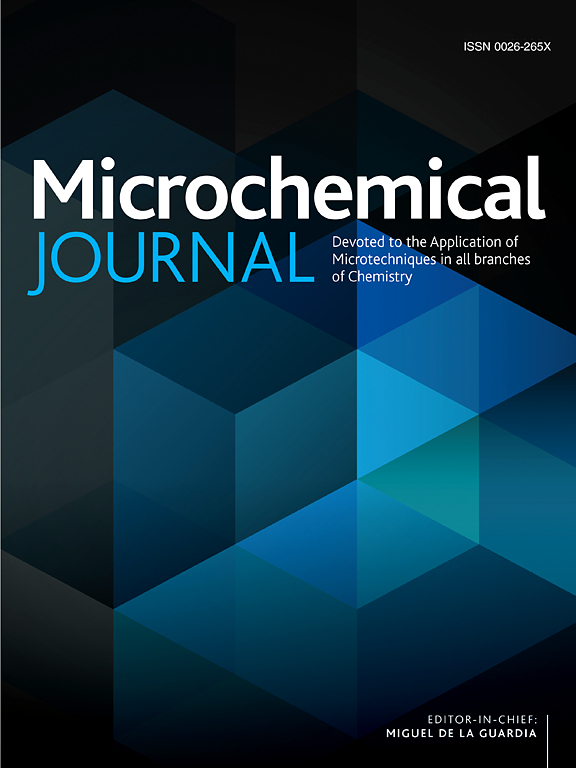Nucleic acid aptamer-based biosensor for health monitoring: A review and future prospects
IF 4.9
2区 化学
Q1 CHEMISTRY, ANALYTICAL
引用次数: 0
Abstract
Functional nucleic acids, beyond their role as carriers of genetic information, exhibit a unique ability to bind specifically to biomarkers. Their notable advantages, including ease of synthesis, flexible labeling, high stability, and cost-effectiveness, have enabled their broad applications in diverse fields such as biomedicine, food safety, and environmental monitoring. In health monitoring, biomarkers found in biological samples—such as blood, sweat, urine, or soft tissues—can be analyzed to evaluate an individual’s health status. Biosensors, typically composed of a molecular recognition element and a signal transducer, enable such detection with high efficiency. Among them, those utilizing nucleic acid aptamers as recognition probes offer a versatile platform for identifying various biomarkers with excellent specificity and sensitivity. This review provides a comprehensive summary of the signal transduction mechanisms underlying aptamer-based sensors and highlights recent advances in their applications for health monitoring. Notably, health-related detection extends beyond disease diagnosis to include monitoring of foodborne and environmental factors that impact well-being. By integrating signal amplification strategies, numerous highly sensitive and selective biosensing techniques have been developed for detecting targets such as proteins, organic molecules, viruses, heavy metal ions, and bacteria, with significant implications for the medical and food safety domains. These advancements pave the way for novel applications of nucleic acid aptamers in chemistry, materials science, medicine, and environmental research, further expanding their potential in interdisciplinary fields.
基于核酸适体的健康监测生物传感器研究进展及展望
功能性核酸,除了其作为遗传信息载体的作用外,还表现出与生物标志物特异性结合的独特能力。它们具有易于合成、灵活标记、高稳定性和成本效益等显著优势,在生物医学、食品安全和环境监测等领域得到了广泛应用。在健康监测中,可以分析生物样本中的生物标志物,如血液、汗液、尿液或软组织,以评估个人的健康状况。生物传感器通常由分子识别元件和信号传感器组成,能够高效地进行此类检测。其中,利用核酸适体作为识别探针,为识别各种生物标志物提供了一个多功能的平台,具有良好的特异性和敏感性。本文综述了基于适配体的传感器的信号转导机制,并重点介绍了其在健康监测中的应用的最新进展。值得注意的是,与健康有关的检测不仅限于疾病诊断,还包括监测影响健康的食源性和环境因素。通过整合信号放大策略,已经开发出许多高灵敏度和选择性的生物传感技术,用于检测蛋白质,有机分子,病毒,重金属离子和细菌等目标,对医疗和食品安全领域具有重要意义。这些进展为核酸适体在化学、材料科学、医学和环境研究中的新应用铺平了道路,进一步扩大了核酸适体在跨学科领域的潜力。
本文章由计算机程序翻译,如有差异,请以英文原文为准。
求助全文
约1分钟内获得全文
求助全文
来源期刊

Microchemical Journal
化学-分析化学
CiteScore
8.70
自引率
8.30%
发文量
1131
审稿时长
1.9 months
期刊介绍:
The Microchemical Journal is a peer reviewed journal devoted to all aspects and phases of analytical chemistry and chemical analysis. The Microchemical Journal publishes articles which are at the forefront of modern analytical chemistry and cover innovations in the techniques to the finest possible limits. This includes fundamental aspects, instrumentation, new developments, innovative and novel methods and applications including environmental and clinical field.
Traditional classical analytical methods such as spectrophotometry and titrimetry as well as established instrumentation methods such as flame and graphite furnace atomic absorption spectrometry, gas chromatography, and modified glassy or carbon electrode electrochemical methods will be considered, provided they show significant improvements and novelty compared to the established methods.
 求助内容:
求助内容: 应助结果提醒方式:
应助结果提醒方式:


